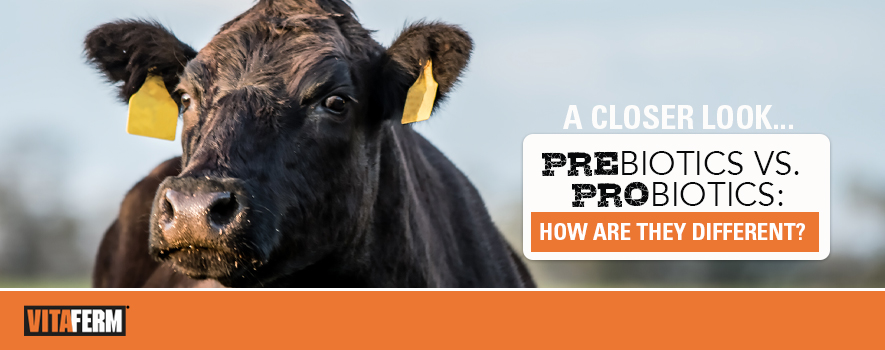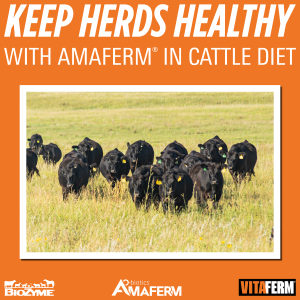Prebiotic and probiotic sound similar; in fact, with just one letter difference, you might even believe they function equally too. However, that is not the case. Both prebiotics and probiotics do play a role in the health of the bacteria found in the digestive tract. Yes, there are good bacteria in there. But they are two very different supplements that play two very different roles in keeping cattle healthy and gaining.
Probiotics are a group of living bacteria that are administered to the animal. This life adds “good” microbes and bacteria to the animal. One caution about probiotics is that this “life” can become death with the heat, the cold or other environmental challenges for the product; therefore, causing the probiotic to be ineffective. Simply stated, if you are giving your cattle a probiotic, you are adding live organisms to what is already in their gut.
Prebiotics, on the other hand, are supplements that support the living microorganisms that already exist in the gut. Prebiotics are not alive but rather work to enhance the naturally occurring growth and benefits of the good microbes that are present.
“The prebiotic is advantageous because it is not alive. It supports the bacteria that are still there, and there is still a large population of live bacteria that are waiting to flourish and grow. I can pellet it or store it on a shelf for extended periods. I don’t have to worry about it dying. A prebiotic gives you a lot of flexibility. In my opinion, a producer should grab the prebiotic first. Prevention always pays over treatment. In really severe cases where we’ve already implemented treatment, and the calves remain stressed and sick, then we would use probiotics.” said Kevin Glaubius, Director of Nutrition at BioZyme® Inc.
The prebiotic serves more of a preventative measure to an animal because it can stimulate the growth of all bacteria in the digestive system and is not dependent on the diet of the animal. For living bacteria to survive, they are dependent on specific diets, such as a high-grain finishing diet or a high-roughage starter diet. The probiotics respond differently when introduced to a new population largely due to the diet. However, if you get a prebiotic in an animal early, you shouldn’t experience a declining bacteria population.
Glaubius said that the labeling on a probiotic can be confusing, especially since they often talk about adding a big number like adding a million colony forming units per gram. That is just a very small percentage of bacteria to add to the rumen when typically, 3 billion individual bacteria are found in every 1 cc of rumen fluid. And although a probiotic does have its place, it is usually a last resort effort to get calves back to eating and gaining after they have experienced extreme sickness and health.
“There is a place for probiotics,” Glaubius said. “I would use probiotics when I have a calf that has been off feed for an extended period of time and has been treated with antibiotics multiple times, which has often killed or reduce the number of rumen bacteria. I expect to see the biggest response in those extremely high-stressed animals. The rumen is very good at digesting lots of different bacteria, and having a diverse population is just as important as having live bacteria.”
One way to provide your livestock a prebiotic and help increase performance while decreasing digestive upset is with Amaferm®. Amaferm is a precision-based prebiotic that is designed to maximize the nutritional value of feed. It is research-proven to promote calf health and vigor and stimulate digestion and nutrient uptake of forage for optimum gain. Research also verifies that when Amaferm is added to the diet, there will be a 30% increase in live bacteria counts.
Producers want their animals to convert their feed to pounds of gain in an efficient manner. Numerous university trials have shown that Amaferm may have its greatest effect on feed efficiency, and as Glaubius reminds, prebiotics are effective on both sick and healthy cattle, forage and grain-fed diets. He said research has shown that in healthy cattle, the Amaferm advantage has increased gains as much as 0.25 pounds per day. Other advantages that the producer will see include more fiber digestion, increased meat and milk production and less manure waste.
Just because two words sound similar, doesn’t mean they are. That one letter makes a big difference in how your cattle’s rumen functions and their overall appetite and gain, which ultimately can make a big difference to your bottom line. Start with a preventative measure, a prebiotic like Amaferm. You’ll see a difference in growth and performance, and when you do have to use a probiotic, that Amaferm should help the probiotic become even more effective.



